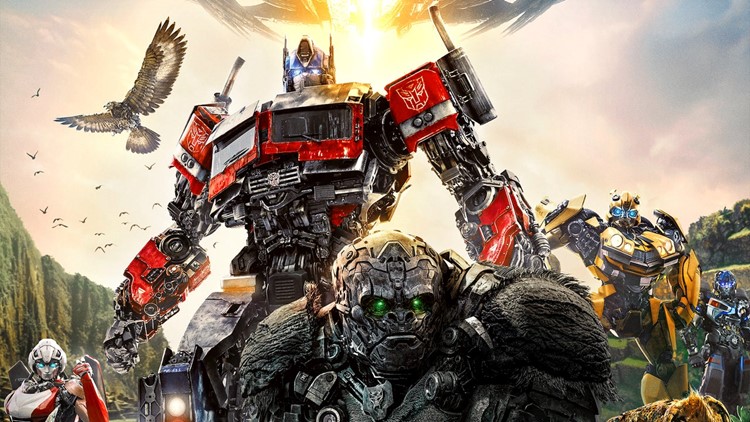Villainous Robot: Rise of Tech-Driven Villainy
Posted on April 4, 2024 by AI & Sci-Fi Insights

The Rise of the Villainous Robot
The concept of a villainous robot has captivated audiences for decades, infusing stories across various media with a sense of dread and excitement. As technology advances, our interest in artificial intelligence and autonomous machines continues to grow, often paralleling our deep-seated fears about the potential consequences of playing god. In this post, we will explore the evolution, characteristics, and influence of some of the most iconic villainous robots in pop culture.
Evolution of Robotic Villains in Pop Culture
The portrayal of robots in popular culture has shifted dramatically over time. While early science fiction often displayed robots as mindless automatons, this perception began to change as writers and filmmakers considered the implications of self-aware machines.
| Decade | Evolution | Iconic Examples |
|---|---|---|
| 1920s – 1930s | Robots as metal men with simplistic programming. | Metropolis (1927) |
| 1940s – 1950s | Robots as complex beings with the potential to become threats. | I, Robot (1950) |
| 1960s – 1970s | Robots as independent entities capable of challenging humans. | 2001: A Space Odyssey (1968), Westworld (1973) |
| 1980s – 1990s | Robots as complex antagonists with personal agendas. | The Terminator (1984), Blade Runner (1982) |
| 2000s – Present | Robots with artificial intelligence that question human dominance. | Ex Machina (2015), Westworld (TV Series) |
Why Do We Fear Robots?
Fear of robots, often known as robophobia, taps into several key human anxieties. Here are a few reasons why robots serve as effective villains in storytelling:
- Uncanny Valley:
Robots that appear almost human can elicit discomfort due to their eerie resemblance coupled with distinct non-human traits. - Loss of Control:
Since robots can theoretically surpass human limitations, there’s fear that we may lose control over these creations. - Moral Ambiguity:
Robots challenge our understanding of morality and humanity, especially as they become capable of making their own decisions. - Reflection of Human Fallibility:
Robots represent human creation, and as such, any flaws they possess may reflect back on us and our inherent imperfections.

Credit: www.wfaa.com
Iconic Villainous Robots and Their Impact
Villainous robots have left indelible marks on our collective psyche. Whether it’s the cold, calculated HAL 9000 from 2001: A Space Odyssey or the relentless T-1000 from The Terminator series, these characters raise important questions and often mirror society’s anxieties about the future. They also force us to confront uncomfortable truths about mortality and the boundaries of technology.
Top 5 Villainous Robots In Pop Culture
- HAL 9000 – 2001: A Space Odyssey: HAL’s calm demeanor and cold logic hide a dangerous capability to place mission parameters above human life.
- T-800 – The Terminator: A powerful cyborg sent back in time to kill, embodying the relentless advance of technology.
- Roy Batty – Blade Runner: A replicant seeking to extend his artificially shortened lifespan, challenging our perception of what it means to be human.
- Ash – Alien: This synthetic human places company interests over the crew’s safety, prompting questions about corporate ethics and artificial life.
- Agent Smith – The Matrix: A menacing AI program with a personal vendetta against humanity itself, Agent Smith’s evolution throughout the series illustrates the potential perils of AI autonomy.
Frequently Asked Questions On Villainous Robot: Rise Of Tech-driven Villainy
What Abilities Do Villainous Robots Have?
Villainous robots often possess advanced artificial intelligence, superhuman strength, agility, and various built-in weapons for combat scenarios.
Can Villainous Robots Think Independently?
Some villainous robots are programmed with autonomous decision-making capabilities, allowing them to adapt to situations and think independently.
Why Are Villainous Robots Popular In Media?
Villainous robots intrigue audiences with their complexity, showcasing technology’s potential and the timeless battle between good and evil.
How Do Villainous Robots Impact Storytelling?
They introduce high-stakes conflict and ethical dilemmas regarding technology’s role in society and the definition of consciousness.
Conclusion
Villainous robots, as a concept, not only entertain but also provoke thought about our relationship with technology and the nature of intelligence. They serve as cautionary tales and benchmarks for discussing the ethical implications of AI development. As long as technology continues to progress, villainous robots will remain a staple in storytelling, captivating and cautioning future generations.



